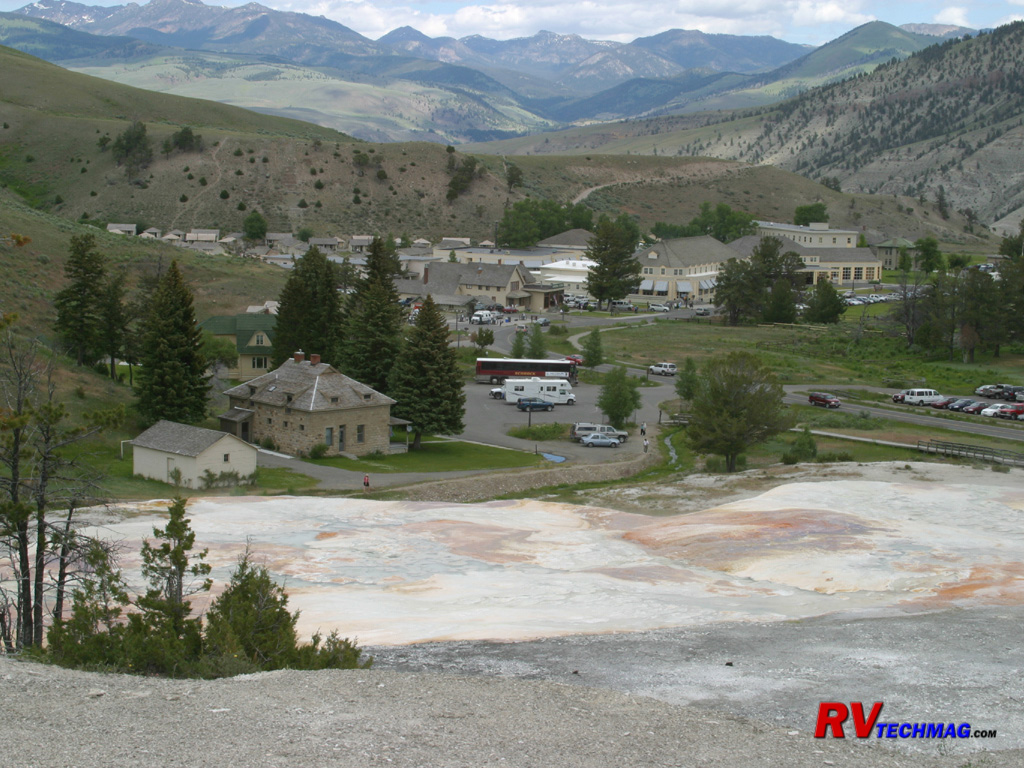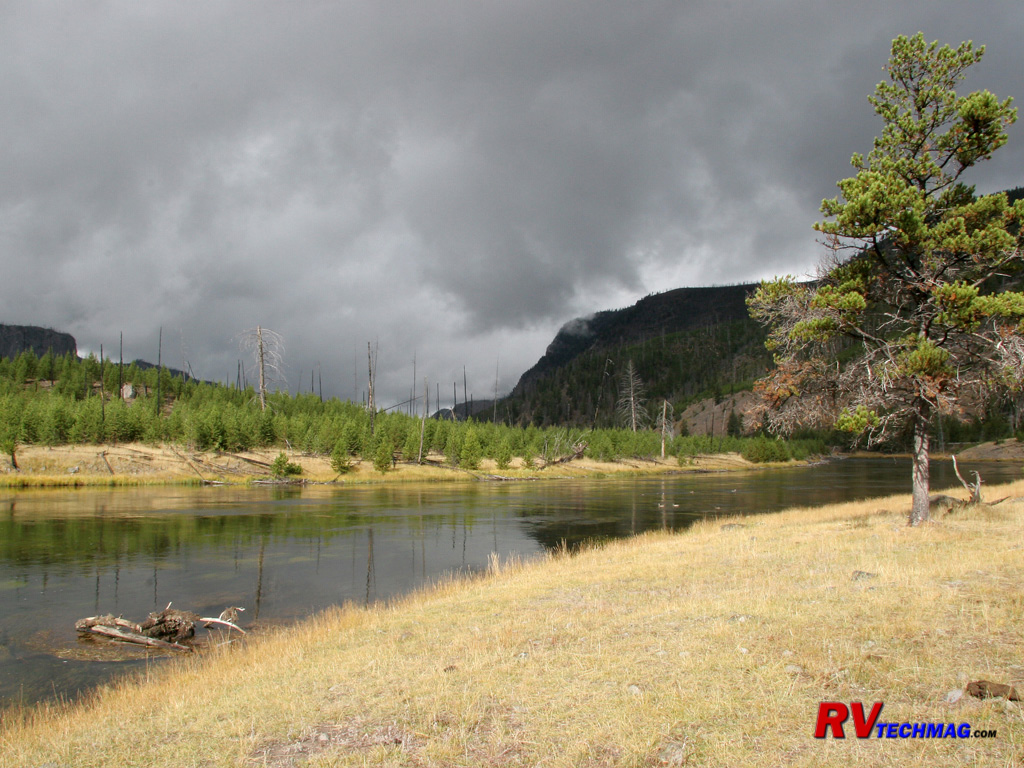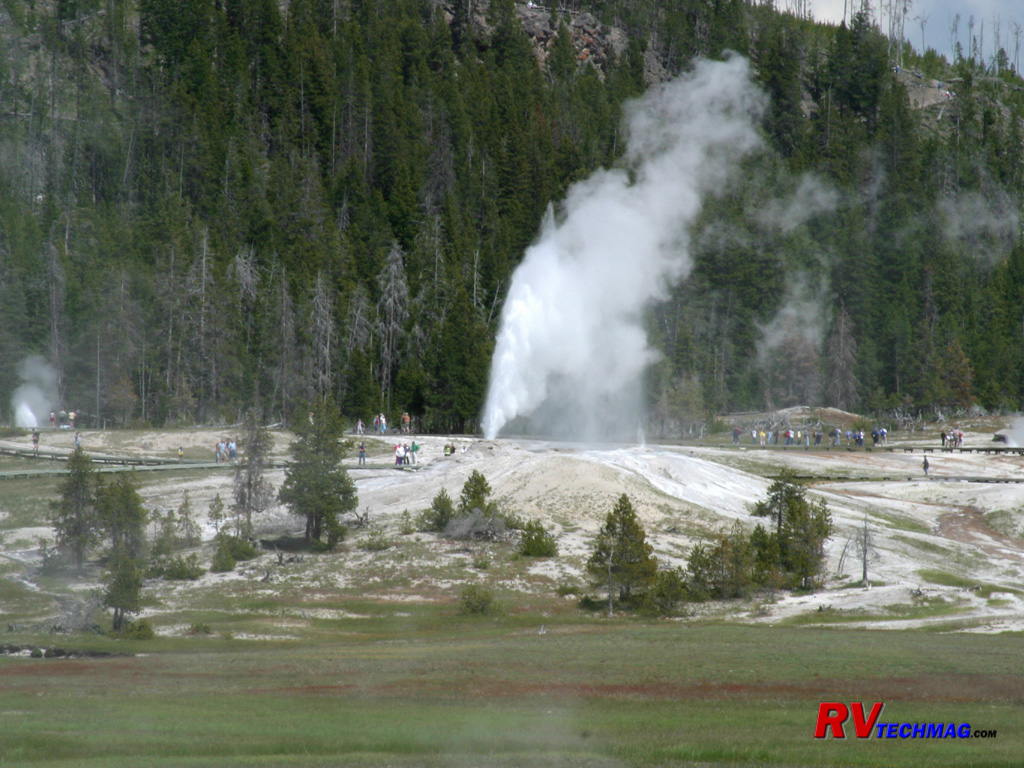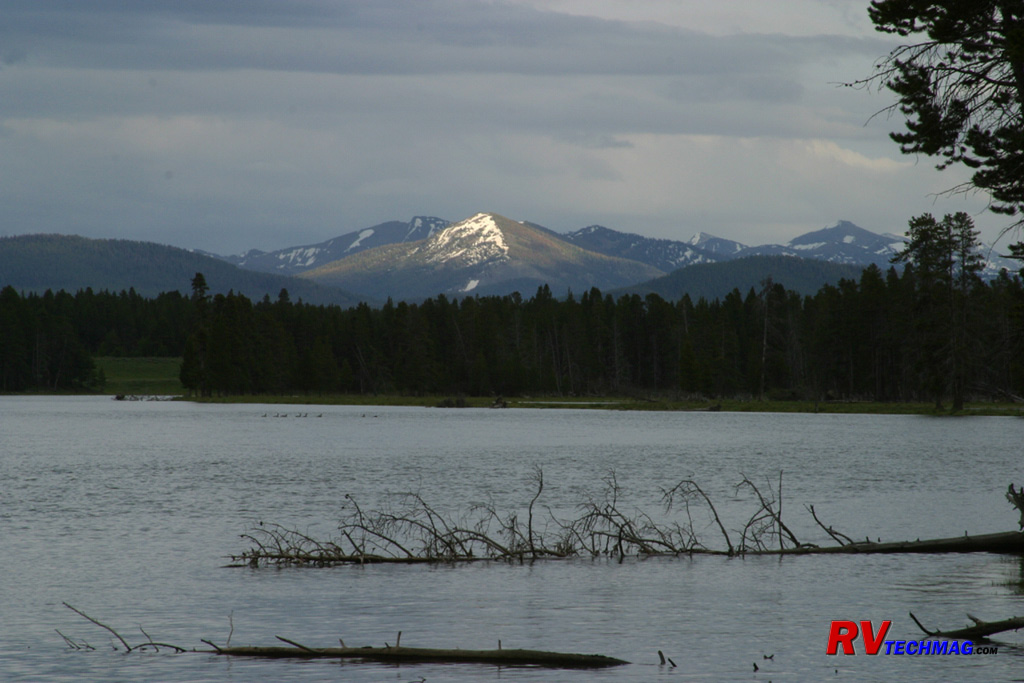Yellowstone National Park
A Photo Journal of America's First and
Best National Park
Article Date: January, 2015
Article and Photography by Mark Quasius
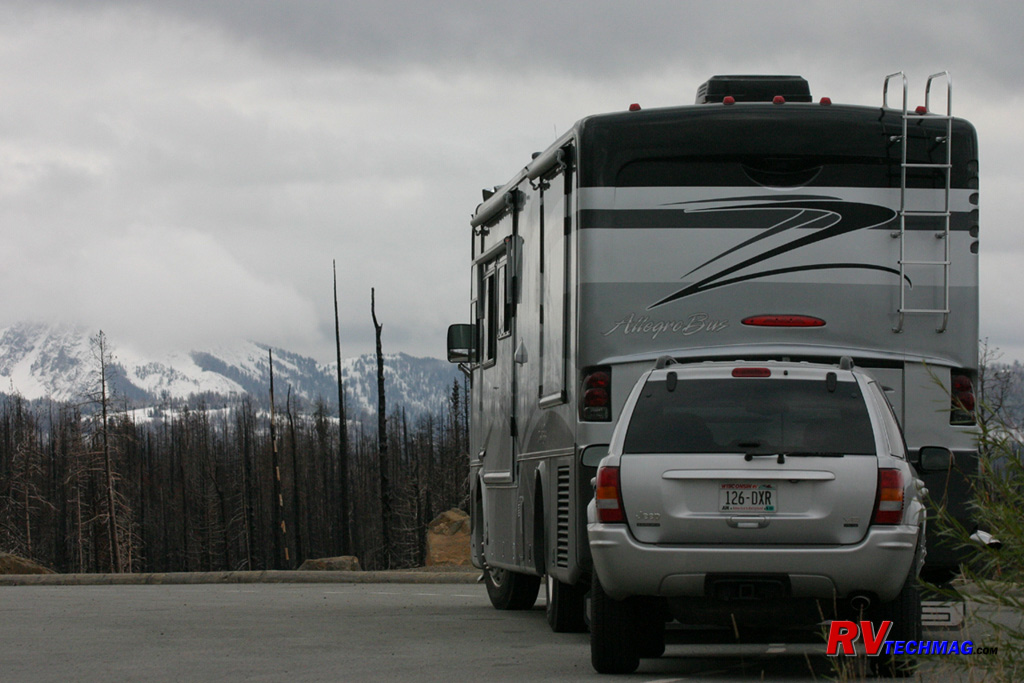
Mention the word "Yellowstone" to most people and the first thought that generally comes to mind is bears and Old Faithful.
While Old Faithful is the most popular tourist spot in the park, many visitors don't get to even see a bear on their first trip. But, Yellowstone is
so much more than that. Yellowstone is a unique place in nature that is not duplicated anywhere else in the world. The wonders of God's creation
come together in one spot and are impressively displayed for all to see. Nowhere on earth can you see such an impressive display of scenery and
wildlife. Yet, Yellowstone is a contrast of sorts. Originally formed by a huge super volcano blast in prehistoric times, it's caldera measures
30 miles x 45 miles across and houses more than two thirds of the world's geysers. Over 10,000 thermal features, such as hot springs, pools, and
geysers are fed by intense heat from the large underground magma pocket that is closest to the surface in Yellowstone than anywhere else in the
world. These thermal features are fed by the many streams and rivers within the park. Names such as Firehole River, Gibbon River, Madison River,
are teeming with cutthroat trout. The largest, the Yellowstone River, flows north out of the park after leaving Yellowstone Lake, which at 131.7
square miles is the largest lake in North America over 7,000' of altitude. As the river leaves Yellowstone Lake, it surges through the golden colored
cliffs of the Grand Canyon of the Yellowstone, where it crashes over numerous waterfalls as it makes it's way to the Missouri River. The tallest,
Lower Falls, is 308' and is taller than Niagara Falls. Much of the 2.2 million acre park is covered by Lodgepole Pine forests. Most of the areas devastated
by the fires of 1988 have now returned to a healthy state with new growth and life appearing where dead stands of mature trees once stood.
Wildlife thrive in this environment. Large bison herds can be seen throughout the park, particularly in Hayden Valley, where
they can number into the hundreds. The fall elk rut brings together bull elk as they gather their harems while Moose spend their time in the marshy
areas of the park. Bald eagles, Trumpeter Swans, and Osprey are seen plying the waters of the many rivers throughout the park while the grizzly and
wolf practice their hunting skills. The park's native Cutthroat Trout are popular pastimes for fly fishermen and can be seen jumping LeHardy Rapids
when it's time to travel upstream to spawn.
Its neighbor to the south, Grand Teton National Park,
seamlessly flows into Yellowstone. During the drive south the scenery gradually changes as the Snake River and Jackson Lake begin to unfold before a
backdrop of the spectacular Teton Mountain range. This alpine setting also serves host to a similar wildlife habitat.
Entering this wonderland requires crossing mountains to drop into this valley of splendor. There are 5 entrances into
Yellowstone National Park but the most awe inspiring drive is over the Beartooth
Mountains. The Beartooth Highway, referred to by Charles Kuralt as "the most scenic highway in America" takes you over 11,000' summits as the terrain
changes from heavy forest to sub-alpine terrain, and eventually alpine tundra before dropping down into Yellowstone national Park.
No pictures can truly convey the beauty of this area. You need to step inside in order to experience its sights and its smells.
Nothing can convey the sound of a bull elk's bugles echoing through the hills or the howls of wolves as they call out their wilderness song. You have
to be there to totally appreciate it. Hopefully these images may spark some desire to fully appreciate this and plan your own trip.
Founded in 1872, Yellowstone National Park is the nations first national park. At 2.2 million acres it encompasses a number of
areas, each unique and distinct in their own way. These areas are connected by a figure 8 shaped road system, originally built over 100 years ago by
the Army Corps of engineers and designed by Hiram Chittenden. There are specific areas that feature visitor services and ranger stations in key areas.
While there is much to see along the connecting areas, I've arranged this photo journal according to some of the main areas due to their unique
features and diversity. Simply select the desired link to go to that area or start at the beginning and begin your journey through the park.
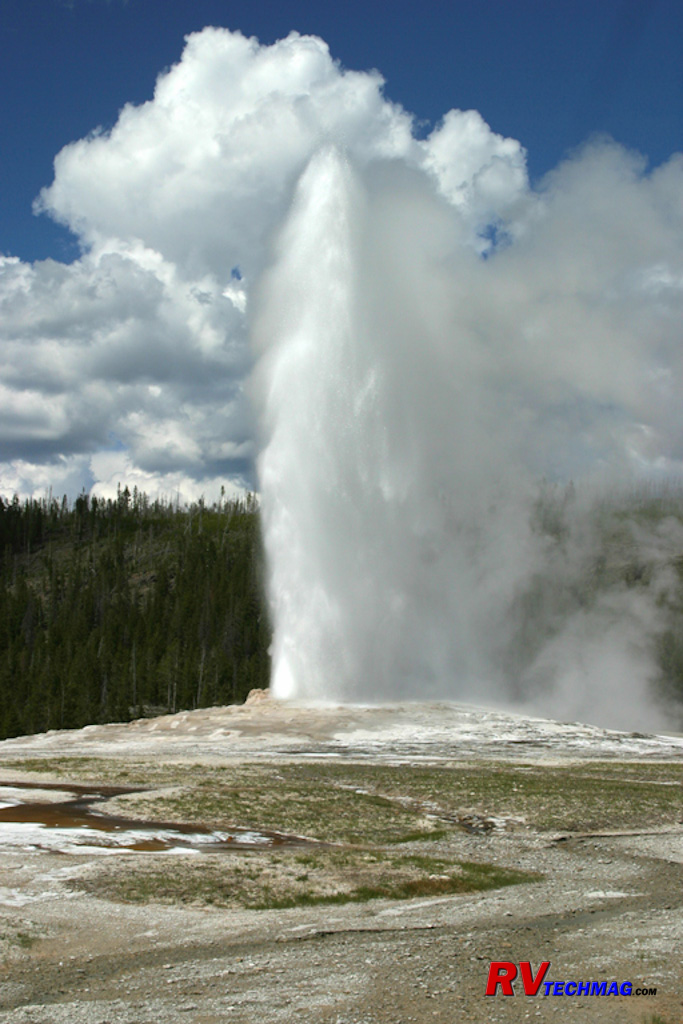
Old Faithful
Return to Home Page
If you enjoyed this article be sure to recommend RVtechMag.com to your friends, like us on Facebook or Twitter
or subscribe to our RSS feed.



|




